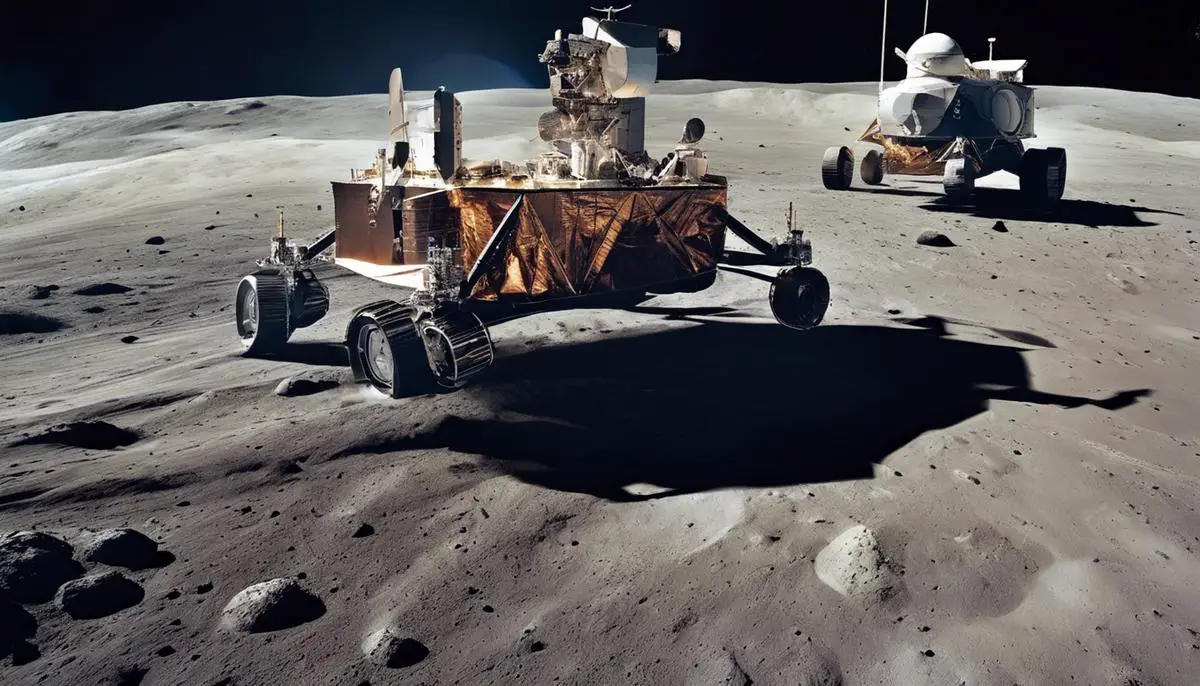As we cast our minds back to the illustrious history of space exploration, the Apollo 17 mission stands out as a significant milestone. Couched in the heated climate of the space race, this mission embodied the culmination of human curiosity, technological prowess, and the visceral urge to transcend our terrestrial confines. This account will unfold the compelling narrative of the Apollo 17 mission, from the geopolitical and scientific context that set the stage, to the profound objectives it sought to fulfill. You will be led on the breathtaking journey embarked upon by the Apollo 17 crew, their groundbreaking lunar activities, and the pivotal roles played by state-of-the-art equipment and technologies, finally concluding with an examination of how this mission forever altered the trajectory of space exploration.
Contents
Prelude to Apollo 17 Mission
Decoding the Genesis of Apollo 17: A Confluence of Ambitions and Discoveries
It’s an indelible imprint on the annals of human history – that iconic photograph of the last man standing on the moon, the Earth a lonesome sphere in the vast expanse of space. That man was Eugene Cernan, the Commander of Apollo 17, and his cohort on the lunar surface, Harrison Schmitt. The culmination of a series of intense scientific endeavours and human aspirations, this mission was the unique product of various integral catalysts and motivations.
The chief impetus behind the Apollo 17 mission was the Cold War rivalry between the United States and the Soviet Union. Thence emerged the compelling space race, with both nations vying for technological and ideological superiority. The U.S. had resolved, following the Apollo 11 moon landing in 1969, to maintain the momentum of their lunar exploits. This resolution was fortified by the favourable public opinion and support – an acceptance driven by national pride and the intoxication of human achievement in uncharted territories.
Simultaneously, continued lunar exploration would yield invaluable scientific data and expand our understanding of the universe. Specifically, the Apollo 17 mission aimed to collect samples from an unexplored region of the moon – Taurus-Littrow, renowned for its rich geological diversity. Lunar rock and soil from this area would provide significant insights into lunar volcanism, the potential presence of water ice, and the moon’s violent impact history.
Facilitating these scientific pursuits was the inclusion of Schmitt, a professional geologist, on the Apollo 17 crew. This was, in great part, a result of the scientific community’s advocacy and insistence for representation in lunar crews. Schmitt’s presence epitomized the growing recognition of the significant role of trained scientists in space missions.
Equally significant was the pressure mounted by budgetary constraints that plagued NASA by the early 1970s. As costs soared, political zeal for lunar exploration waned, and appropriations for the space agency dwindled. In effect, the pressing threat of the program’s truncation hastened the planning for Apollo 17, prompting it to be packed with multiple objectives and experiments.
Similarly, the escalating technicism in the space exploration domain was influential. Emerging technologies like the Lunar Roving Vehicle (LRV) allowed astronauts to cover larger surface areas and collect an unprecedented amount of lunar samples. The LRV was eponymous with the Apollo 17 mission – enabling the deeper and broader exploration that would comprehensively exploit its last moon visit.
Delving into the genesis of the Apollo 17 mission thus reveals a fascinating confluence of motivations – geopolitical rivalry, scientific curiosity, individual expertise, budgetary pragmatism, and technological advancements. Together, they sparked the execution of one of the most ambitious space missions of the 20th century, leaving a legacy that continues to inspire future explorations of the final frontier.
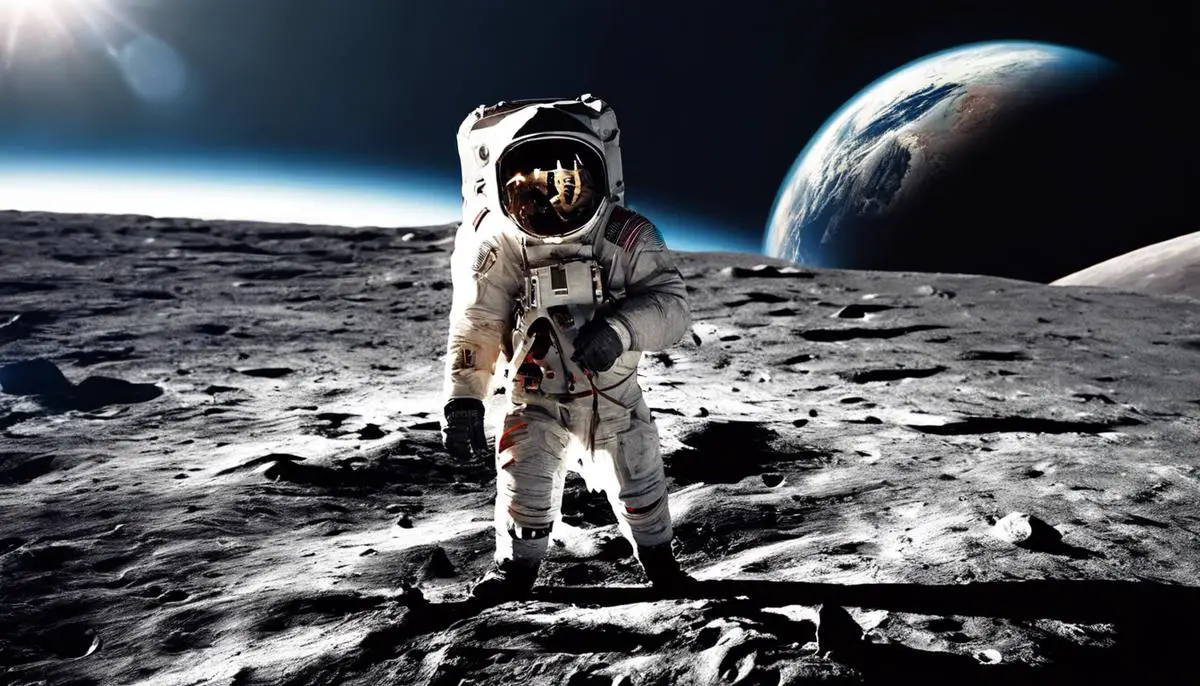
Primary Objectives of Apollo 17
The Apollo 17 mission, launched in December 1972, remains the most recent mission to land humans on the lunar surface. This mission held numerous key objectives that were both innovative and imperative to the scientific community and aimed at furthering our understanding of the moon’s geography and history.
Primarily, the Apollo 17 mission, like its predecessors, sought to continue the assessment and investigation of the lunar surface’s environment. However, this mission marked a more specialized approach as it aimed to understand the geological context of the Taurus-Littrow landing site, an area rich in distinctive geology offering a unique and pivotal opportunity for in-depth study. The astronauts were tasked specifically with obtaining a diverse array of samples, such as lunar surface material and bedrock samples from the landing area, which was nestled on the edge of a deep valley ringed with high mountains and dark-colored volcanic material.
The second major objective was to deploy the Apollo Lunar Surface Experiments Package (ALSEP) – innovative equipment designed to gather data on seismic activity, lunar atmospheric pressure, and composition, among other environmental factors. These distributed experiments were of paramount importance to streamline scientific understanding of the lunar surface over a long period and offered an opportunity for continuous remote data collection even after the mission had ended.
An underlying objective, underscored by the inclusion of Harrison Schmitt, was to bridge the gap between terrestrial and lunar geology, creating a link to better understand our own planet’s geology. He was tasked with reading the moon’s “geologic story” inscribed within its rocks and mountains, thus humanizing an otherwise machine-dominated exploration.
Furthermore, Apollo 17 also aimed to demonstrate the feasibility of a scientist-astronaut in future space missions. The inclusion of Schmitt, a scientist, and not just a test pilot, incorporated a new dimension into the astronaut corps. It signified a transition from purely exploratory missions to missions with a strong emphasis on scientific research and findings.
Lasty, the Apollo 17 mission also held technological objectives. It aimed to further demonstrate the performance, capabilities, and reliability of the Lunar Roving Vehicle (LRV) in the challenging lunar environment as well as assess modifications placed upon it following its previous use in the Apollo 15 and 16 missions.
On a more abstract note, the Apollo 17 mission carried the torch of human curiosity and exploration, fostering an appreciation of the majestic human ingenuity. It stood as a testament to our relentless quest for understanding and symbolized humanity’s collective capacity to rise above the ordinary, stimulating global imagination and providing a distinct, first-hand, scientific perspective of our celestial neighbor.
Image:
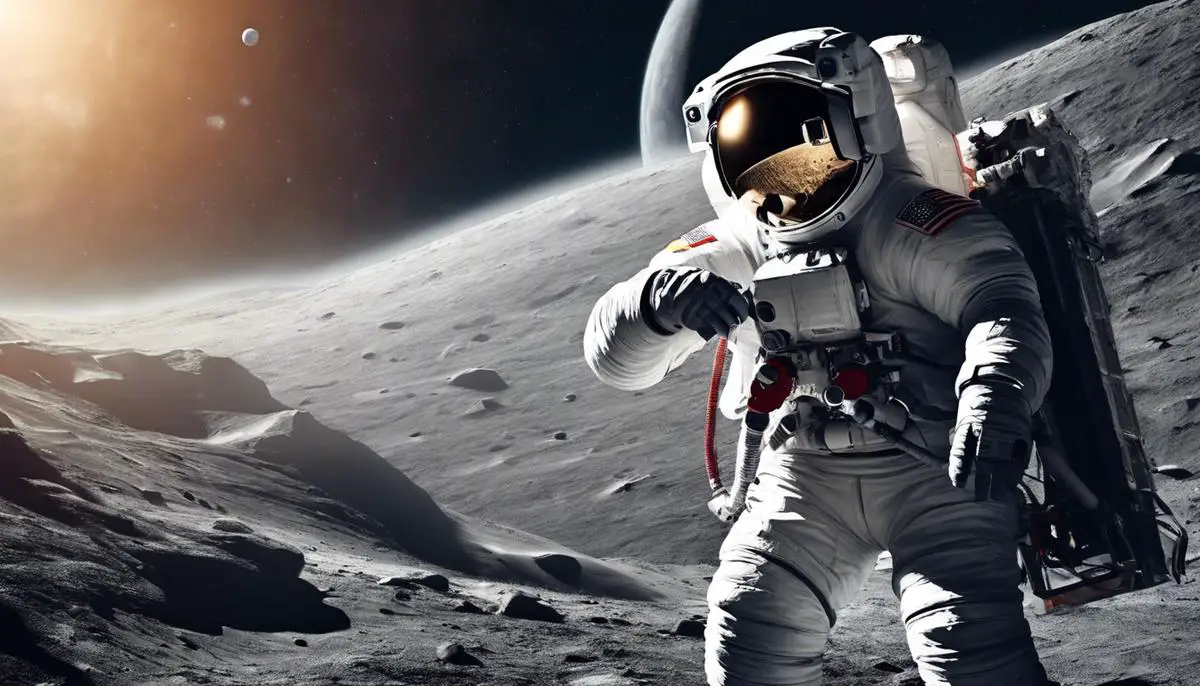
The Apollo 17 Crew and Equipment
Emphasizing Apollo 17’s transcendental importance in the annals of space exploration, it becomes imperative to underscore the key personnel involved along with the groundbreaking technology. This epochal mission was commanded by Eugene A. Cernan, joined by the lunar module pilot, Harrison “Jack” Schmitt, whose established geological expertise has already been noted, and Ronald E. Evans as the command module pilot. Their collective expertise provided the backbone that ensured the success of the mission while simultaneously pushing the boundaries of our scientific knowledge.
Commander Cernan, optimistic and skilled, stood as the fulcrum balancing diligent preparation with the demands of this herculean task. He came equipped with experience from the Gemini IX and Apollo 10 missions to serve as an effective lead. Pentagon to the mission’s core objective, Cernan was fully cognizant of the importance of their goal, famously stating, “We leave as we came, and, god willing, we shall return, with peace and hope for all mankind.“
Adding to this dynamic team, Evans brought exceptional navigational prowess that proved instrumental in ensuring their safe sojourn. His and Cernan’s intricate dance of lunar orbits, while Schmitt traversed the lunar surface, showcased a remarkable technical proficiency that was a testament to the intense training undertaken by both.
The mission was not solely hallmarked by the crew but also the state-of-art equipment used. Of particular note is the Lunar Module (LM), affectionately termed ‘Challenger.’ A marvel of American engineering, the LM was replete with myriad instrumentation necessary for the crew’s survival and to conduct experiments crucial not just to the mission, but to expanding our understanding of the lunar reality.
Moreover, the Lunar Roving Vehicle (LRV), colloquially known as “moon buggy,” played a pivotal role in extending the astronauts’ reach beyond the landing site. It facilitated transportation of crew members and large lunar samples with its robust yet lightweight structure, antithetical as it may sound, which worked in harmony with the distinct lunar gravity, thereby broadening the scope of area exploration.
Further, the ALSEP was an integrated suite of scientific instruments placed at the landing site by the astronauts. It comprised a seismometer to measure lunar “moonquakes”; an instrument to detect lunar dust, the Lunar Surface Magnetometer (LSM); and a device to measure the moon’s extremely thin atmosphere, among others.
Truly, Apollo 17 served as an outstanding confluence of human brilliance and technological advancement. As the last human voyage to the moon for decades hence, it was a brilliant, resounding coda to the zealous age of lunar exploration.
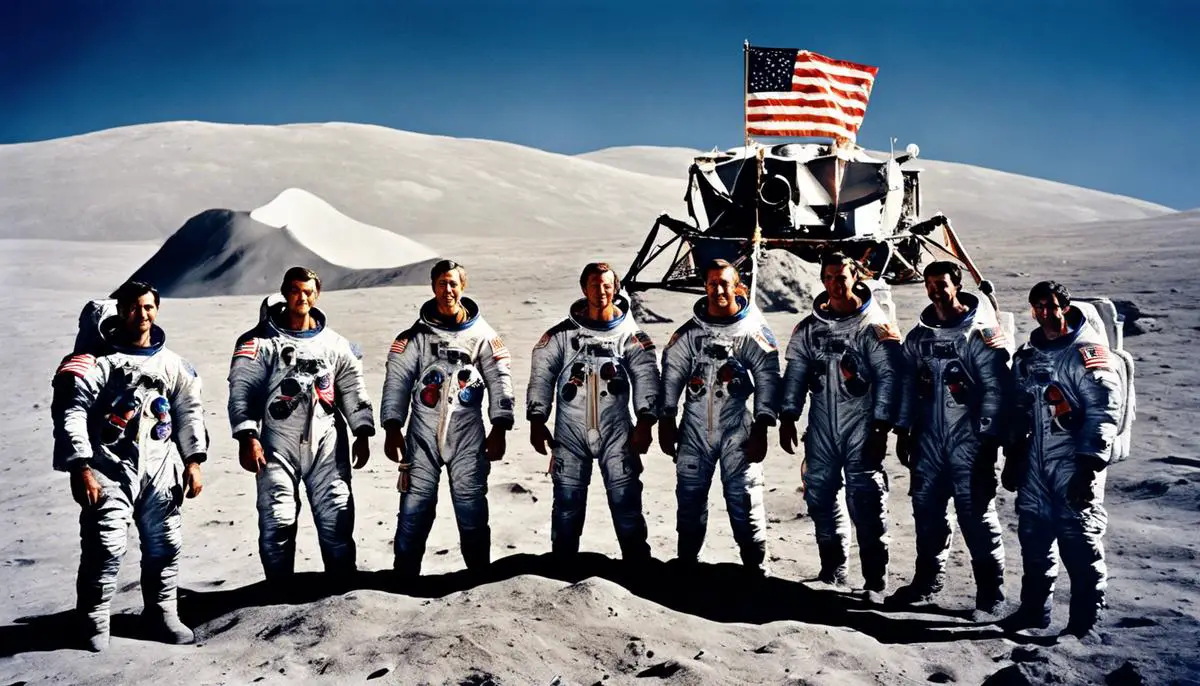
Moon Surface Activities and Findings
Despite previous insights discussed regarding lunar exploration, the key activities conducted on the lunar surface went beyond the cursory glances and aspiration-driven scientific observations. Among these activities were in-depth geological surveys, operational testing of equipment under lunar conditions, and meticulous documentation of the lunar environment, which all brought forth substantial scientific findings.
Schmitt and Cernan undertook extensive geological surveys as part of their mission. Armed with the knowledge of a professional geologist, Schmitt provided detailed, on-the-spot analyses of the lunar surface and its various features. Documented through photographs and voice transmissions, these analyses created a priceless source of firsthand geological insights. The Lunar Roving Vehicle, a four-wheeled rover deployed on the Moon for the first time on Apollo 15 and subsequently utilised in Apollo 16 and 17 missions, aided in these comprehensive surveys by expanding the crew’s exploratory range.
The astronauts also played a significant role in expanding humanity’s comprehension of the lunar atmosphere—or lack thereof. Through a series of deployments and data collections using scientific instruments, profound insights into the extremely thin exosphere were derived. These results clinched critical debate points back on Earth regarding whether the lunar surface possessed an atmosphere—a unified acceptance of the vacuum-like conditions around the Moon was achieved.
The astronauts extended the fra mauro formation, a geological complex formed as a result of the giant impact that formed the Imbrium Basin, by analyzing the samples collected. This activity enabled them to outline the surface’s subsequent evolution and impact history, thereby advancing the broader understanding of the Moon’s geological chronology.
Deeper implications of this vast trove of geological and atmospheric information shed an illuminating light on hypotheses about lunar origins. The astronauts’ diligent sample collection enriched studies back on Earth, contributing significant evidence to the prevailing theory of the Moon’s formation, commonly known as the Giant Impact Hypothesis. This hypothesis suggests that the Moon was formed from the debris left over after an impact between Earth and a Mars-sized body.
Space exploration is a carefully measured risk, and operational testing under actual lunar conditions was an integral part of these missions. Every instrument deployed, from the LM to the ALSEP, played a crucial role in demonstrating the feasibility of different technologies under severe lunar conditions. Such a test yielded significant findings, not only validating the technologies that were tested but also providing fundamental insights in designing and developing future lunar and deep-space exploration equipment.
In conclusion, the careful and methodical activities conducted on the lunar surface during the Apollo missions gave rise to a multitude of significant scientific findings. The Moon, it transpires, is no mere celestial body, but a fine-grained record of cosmic events, a subject of greatly illuminating study, and a staging ground for ambitious future off-world explorations.
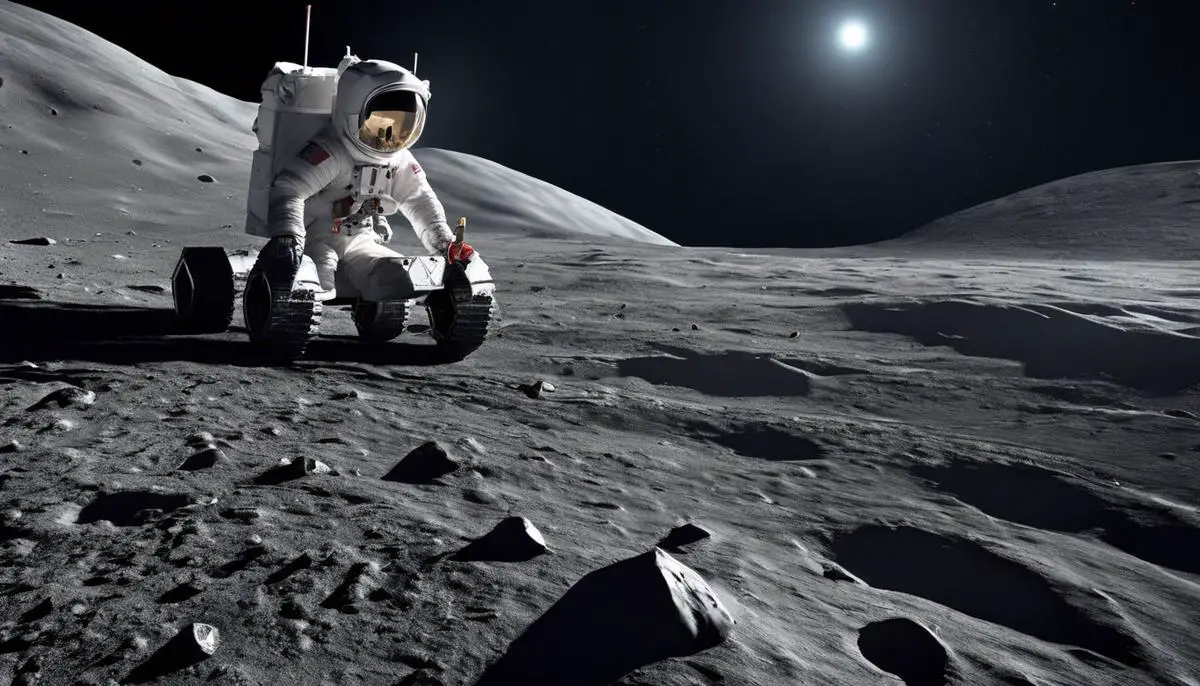
Aftermath and Legacy of Apollo 17
The table is set with a banquet of context, a plethora of missions, technical successes, human narratives, and moments of discovery that have laid the grounds for our discussion on the Apollo 17 mission’s aftermath and its enduring impact on space exploration. Let’s garnish this banquet with the buffet of knowledge that has been accrued since man last set foot on the lunar surface.
Post-Apollo 17, a significant restructuring of NASA’s priorities took place, and while lunar exploration was necessarily scaled back, a new dawn of expanded, comprehensive knowledge was breaking. The moon samples brought back from the Apollo 17 mission significantly impacted the scientific understanding of the Moon, effectively molding much of lunar science. Key data from these lunar samples led to the development of the “giant impact hypothesis,” the leading explanation for our moon’s formation. It posited that a Mars-sized celestial body collided with Earth, and debris from this impact eventually formed the moon.
The scientific endeavor also saw the development of space applications that weren’t directly pertaining to the lunar surface but held significant importance nonetheless. Orbital rendezvous, extended space flight, crew recovery – the repertoire of novel techniques that Apollo 17 contributed to was immeasurable. Not only did these innovations fine-tune our technique; they also expanded the scope for space exploration missions, such as the Viking missions to Mars, which employed several of these techniques.
Still, in the grand arena of space exploration, the profundity of Apollo 17’s influence was not only of a technical and scientific nature. It brought to the fore the concept of global cooperative space exploration. The mission’s successful return heralded a changing atmosphere for international cooperation on space exploration issues, ushering in an era that would see the birth of the International Space Station—a testament to the unifying power of shared human curiosity and ambition.
Simultaneously, Apollo 17 and its antecedents permanently raised the bar for public expectation and interest in space exploration. The televised landing and moonwalk elicited a sense of collective ownership and involvement in space exploration, which has continued to shape public attitudes towards space travel and scientific exploration.
In the equation of space exploration, Apollo 17 factored in as the summation of the Apollo series’ accomplishments. Its vast influence acted as a force multiplier, cascading through numerous aspects of space exploration—shaping our understanding of cosmic geography, expanding exploratory and logistical potential, fostering international cooperation, and shaping public attitudes towards the final frontier itself.
Today, the endeavors of the Apollo missions, including the iconic Apollo 17, provide inspiration for new lunar programs, including NASA’s Artemis program. The aim is not only to return humans to the lunar surface, but also to establish sustainable human presence by 2028, with the long-term goal of preparing for human missions to Mars. The knowledge and experience gained from Apollo 17 and fellow Apollo missions will surely play a crucial role in realizing these goals.
In conclusion, to measure the magnitude of Apollo 17’s impact is to acknowledge that its gravitational pull still resonates through today’s space exploration endeavors. Each subsequent moonshot, be it actual or metaphorical, draws momentum from Apollo 17’s societal, technical, and scientific impact, serving as a poignant reminder of humanity’s potential when driven by the inherent need for exploration and understanding.
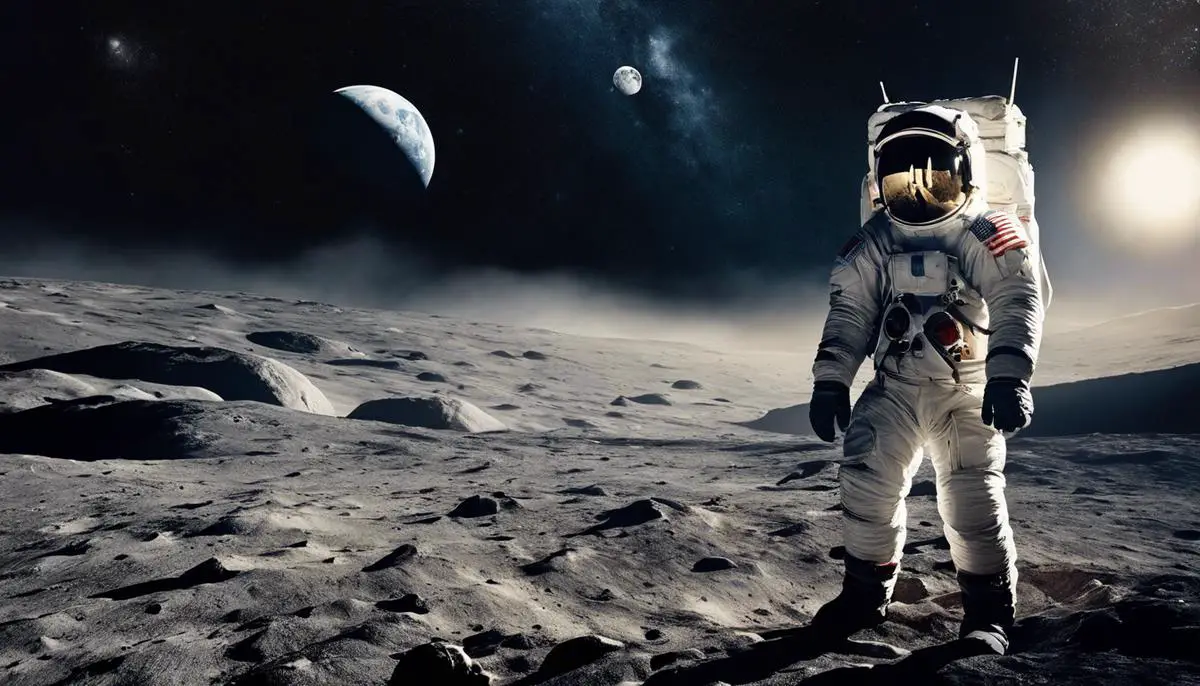
With the conclusion of Apollo 17’s journey, humanity stood at a new frontier, gazing back at what had been achieved and looking forward to what lay beyond. This final Apollo mission was more than just another step in space exploration—it symbolized the boundless possibilities humanity could reach when driven by curiosity and fueled by scientific and technological ingenuity. From our review, we see that the Apollo 17 mission highlighted the empowering tapestry of human curiosity, technological innovation, scientific discovery, and a relentless spirit that refuses to settle for known horizons. The legacy it left, still palpably influential today, continues to shape our understanding of the cosmos and the place of humanity within it, leaving us with the inescapable conviction that our destiny lies in the stars.
